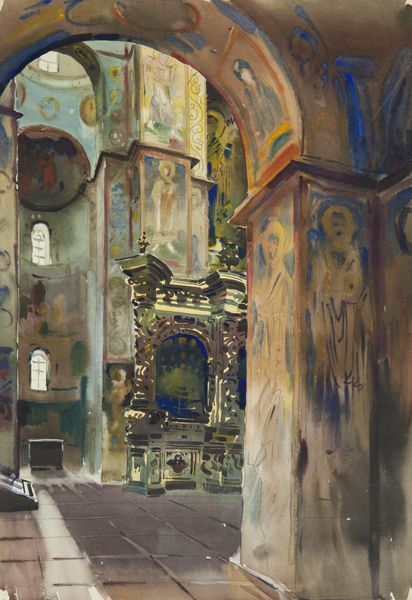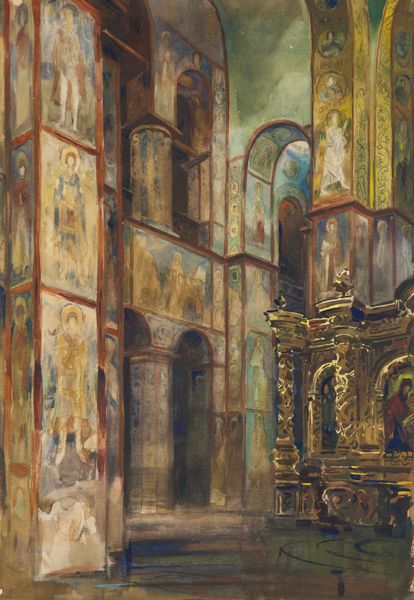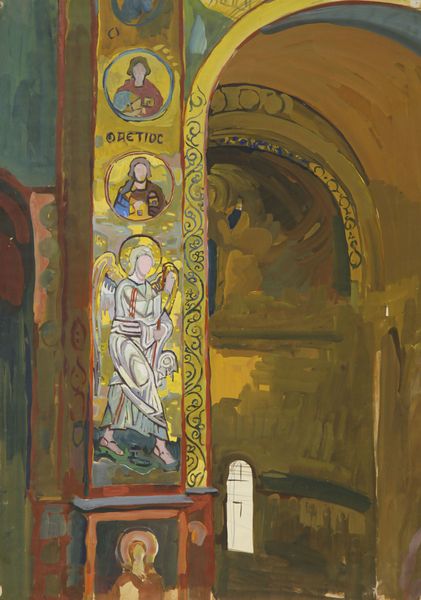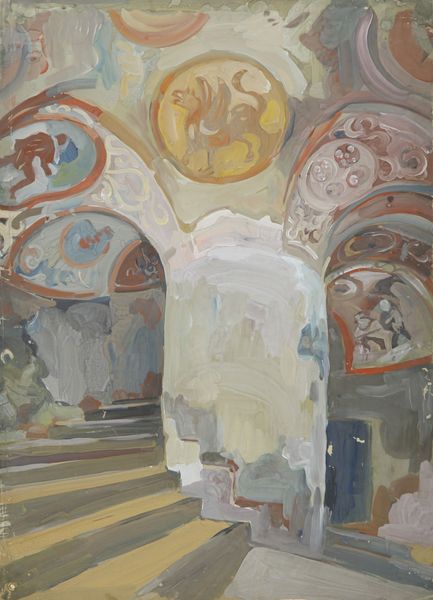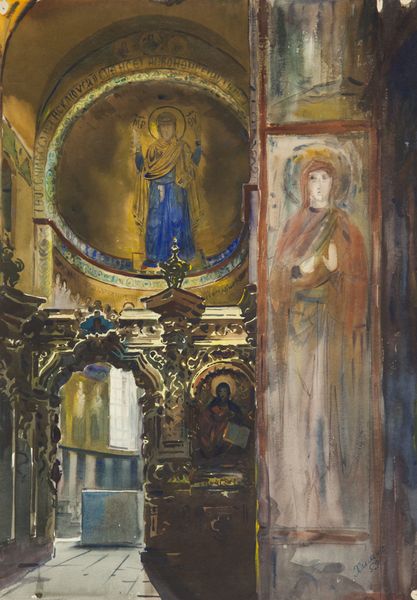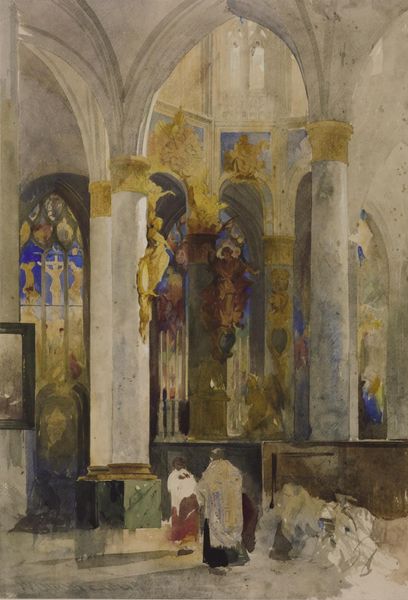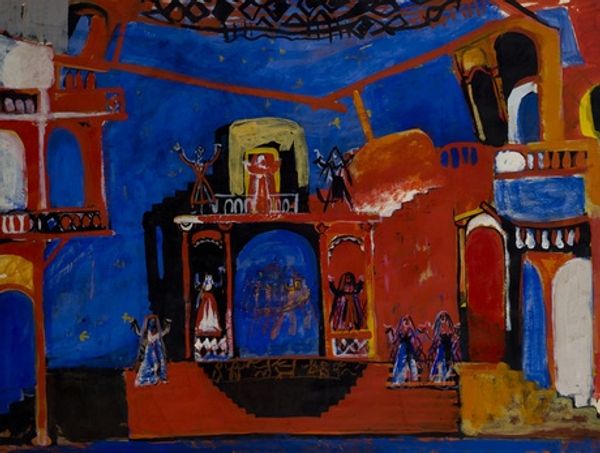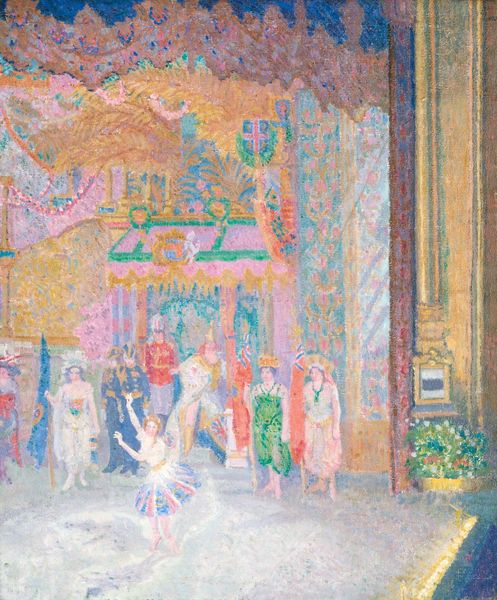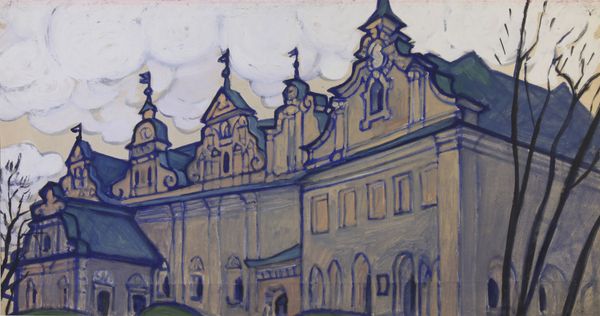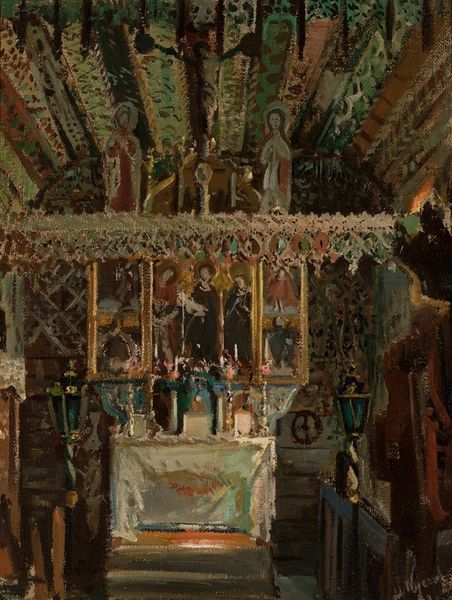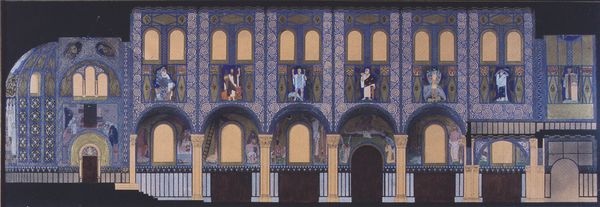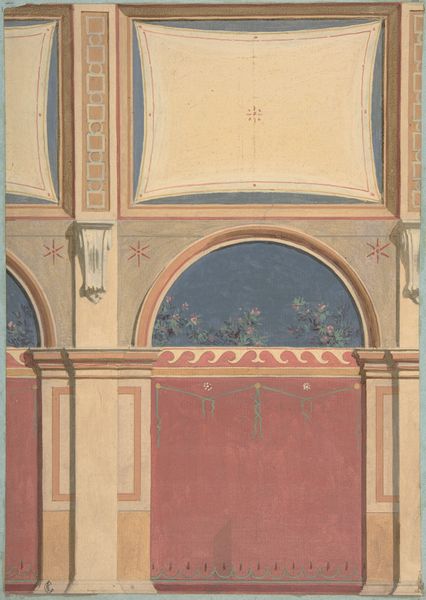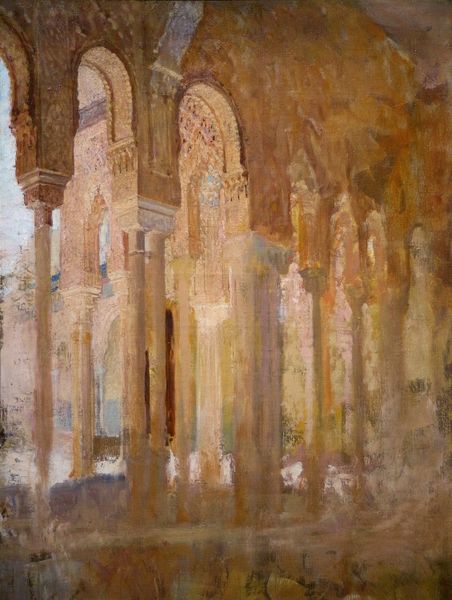
tempera, painting, mural
#
byzantine-art
#
tempera
#
painting
#
figuration
#
oil painting
#
mural
Dimensions: 83 x 59.5 cm
Copyright: Yuriy Khymych,Fair Use
Editor: This is Yuriy Khymych’s “Sophia of Kyiv. Interior of the central nave from the iconostasis,” made with tempera in 1968. I’m struck by how vibrant the colors are, almost clashing, yet it feels like a real space. What do you see in this piece? Curator: What immediately grabs me is how Khymych captures a space burdened by centuries of both veneration and sociopolitical struggle. We're looking at a depiction of the Saint Sophia Cathedral, a site deeply intertwined with Ukrainian identity. This painting, created during Soviet rule, speaks volumes about cultural preservation amidst political oppression. Do you notice how he emphasizes the Byzantine artistic style? Editor: Yes, the figures feel very traditional. Is that significant? Curator: Absolutely. It is an act of defiance! By highlighting the Byzantine elements, Khymych subtly emphasizes Ukraine's historical and cultural ties to Europe, resisting Soviet efforts to erase or rewrite that history. Consider, too, the use of tempera. It's a medium strongly associated with icon painting and the sacred. What does that choice signal to you? Editor: I guess it suggests a reverence for the space and its history? Even if he couldn’t directly address contemporary politics… Curator: Precisely. This artwork becomes a silent protest. He uses traditional artistic language to preserve collective memory. It’s not just about depicting a space; it’s about reclaiming a heritage. The act of painting becomes an act of resistance. Editor: So, looking at art like this is not just about aesthetics, but also about understanding its political implications? Curator: Exactly! By examining the historical and social contexts, we reveal art's crucial role in shaping and challenging dominant narratives. Editor: I never thought about it that way. It's like the painting has a hidden voice. Curator: Indeed, and now, hopefully, we’ve helped it to speak a little louder.
Comments
No comments
Be the first to comment and join the conversation on the ultimate creative platform.
